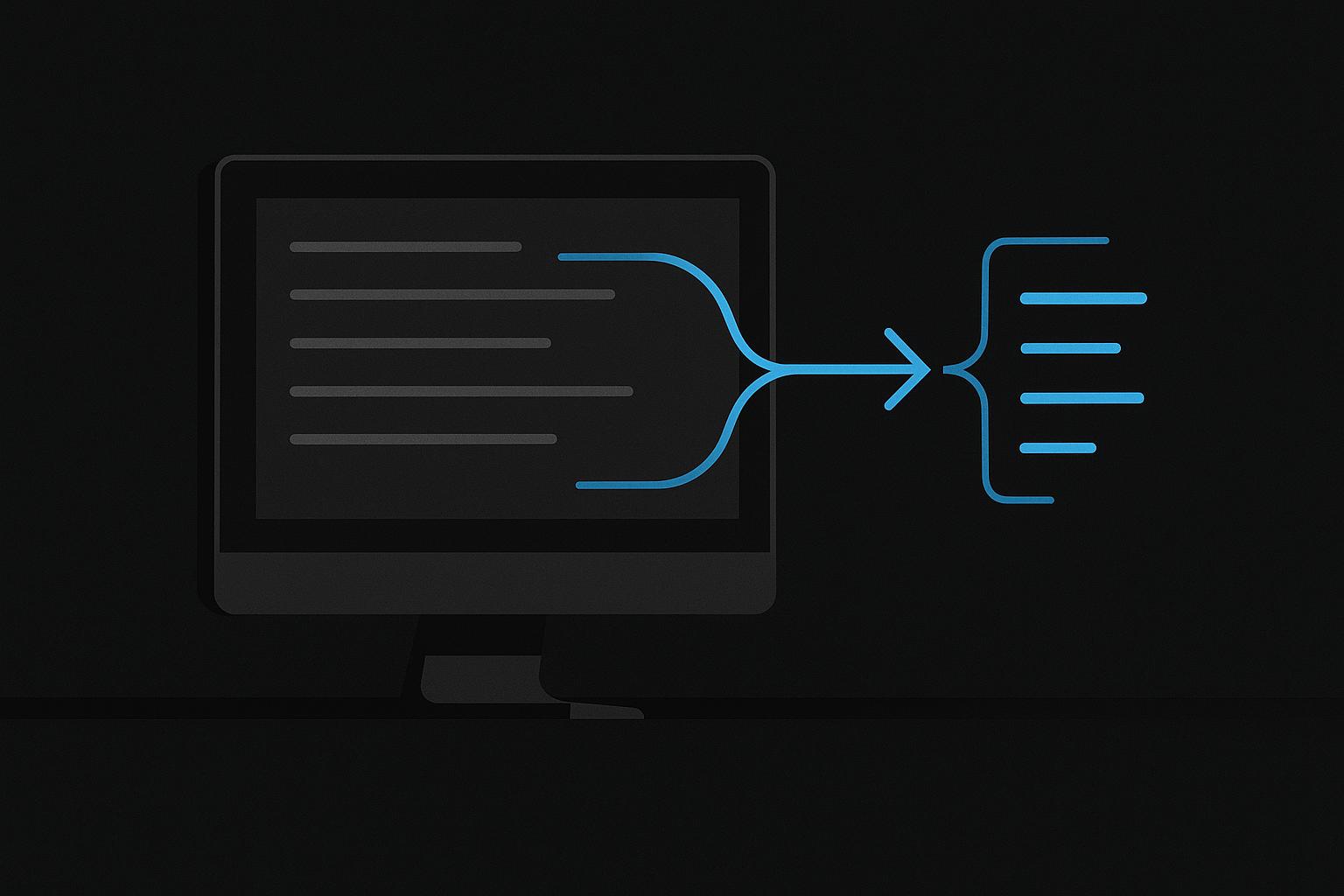Web scraping is transforming how telecom companies improve services, reduce costs, and stay competitive. Here’s what you need to know:
- What It Does: Automates data collection from websites like social media, review platforms, and competitor sites.
- Key Benefits:
- Tracks customer feedback and sentiment in real time.
- Monitors competitor pricing and services.
- Ensures compliance with regulatory updates.
- Identifies trends to improve services and infrastructure.
- Impact:
- Saves 30–40% of time.
- Reduces costs by up to 40%.
- Achieves up to 99.5% data accuracy with AI tools.
How to Get Started:
- Use tools with features like JavaScript rendering, proxy management, and geotargeting.
- Follow ethical practices: check
robots.txt, respect privacy laws, and validate data. - Integrate insights into decision-making for better customer experiences and market strategies.
Web scraping is a powerful tool for telecom companies to make smarter, faster decisions while staying compliant with U.S. legal standards.
Main Uses in Telecommunications
Gathering Customer Feedback
Web scraping helps telecom providers collect feedback from various digital platforms like social media, review sites, forums, and customer support portals. Platforms such as Twitter, Facebook, LinkedIn, Trustpilot, and the Better Business Bureau are common sources for identifying recurring problems and tracking changes in customer sentiment.
By automating this process, providers can identify trending topics and pain points that might go unnoticed through traditional feedback methods. Alongside customer insights, this approach also highlights broader market trends.
Monitoring Market Shifts
Social media monitoring through web scraping offers valuable market insights. By analyzing trending posts, user profiles, comments, and reviews, telecom providers can detect changes in customer preferences and spot new areas of interest in the market.
Staying Compliant with Regulations
Compliance is a key area of focus for telecom companies. Automated tools can track updates from the FCC, state public utility commissions, and consumer protection agencies, making it easier to stay aligned with regulatory requirements.
Enhancing Services
By analyzing online discussions, telecom providers can identify issues like network coverage gaps and service quality problems. This data allows for targeted infrastructure improvements. Maintaining consistent data collection while respecting privacy and website terms ensures that these upgrades are both effective and ethical.
This data-driven approach helps telecom companies improve customer experiences, adapt to market changes, meet regulatory standards, and optimize services. Together, these efforts support better decision-making and a stronger competitive edge.
How to scrape dynamic website data from network requests ...
Web Scraping Methods and Tools
For telecom companies, choosing the right web scraping tools and methods is critical for effective data collection and analysis.
Key Features to Look For
Web scraping tools should include advanced extraction capabilities, efficient navigation, and scalable API access. Here are some essential features for the telecommunications sector:
| Feature | Purpose | Benefit |
|---|---|---|
| JavaScript Rendering | Handles dynamic content | Collects more comprehensive data |
| Proxy Management | Prevents IP blocking | Ensures uninterrupted scraping |
| Worldwide Geotargeting | Accesses regional data | Supports in-depth market analysis |
| Custom Data Output | Flexible data formatting | Simplifies system integration |
Platforms like InstantAPI.ai offer a 99.99%+ success rate in web scraping for just $0.005 per page, making it an affordable option for large-scale projects.
How to Implement Web Scraping Effectively
To get started, follow these steps:
- Check the site's
robots.txtfile to ensure compliance with scraping rules. - Use tools to bypass CAPTCHA challenges.
- Validate critical data points as they are collected.
- Adhere to U.S. privacy laws, including CCPA regulations.
These steps, combined with strong data quality practices, will help ensure your scraping efforts are both effective and ethical.
"After trying other options, we were won over by the simplicity of InstantAPI.ai's Web Scraping API. It's fast, easy, and allows us to focus on what matters most - our core features." - Juan, Scalista GmbH
Managing Data Quality
Maintaining accurate and reliable data is just as important as collecting it. Here’s how to do it:
- Use validation protocols to check for consistency.
- Apply cleaning processes to standardize data.
- Test integration with your existing systems.
- Monitor data quality regularly to ensure accuracy.
sbb-itb-f2fbbd7
Setting Up Web Scraping Projects
Choosing Data Sources
When setting up a web scraping project, start by identifying websites that provide valuable information about customer behavior, market trends, and competitor activities.
| Data Source Type | Key Information | Business Impact |
|---|---|---|
| Review Platforms | Customer feedback, service ratings | Improve services |
| Industry Forums | Technical discussions, user pain points | Guide product development |
| Regulatory Sites | Compliance updates, policy changes | Manage risks |
| Competitor Sites | Service offerings, pricing structures | Enhance market strategy |
Creating Automated Systems
For web scraping to be effective, automation systems must be both scalable and dependable. Tools like InstantAPI.ai simplify this process by offering features like global geotargeting and proxy management, ensuring consistent data collection across regions.
The automation process includes three main steps:
1. Setup Configuration
Define the parameters for your scraping tasks. InstantAPI.ai simplifies complex tasks, such as:
- Handling dynamic content with JavaScript rendering
- Bypassing CAPTCHA challenges
- Formatting data outputs to meet specific needs
- Using proxy rotation to avoid disruptions
2. Schedule Implementation
Plan regular scraping intervals tailored to your business requirements. Key considerations include:
- Setting consistent scraping schedules
- Defining rules to validate collected data
- Establishing protocols to handle errors
- Monitoring system performance for reliability
3. Integration Framework
Seamlessly connect the scraped data to your existing systems. This can include:
- API connections to internal databases
- Real-time data processing workflows
- Automated alerts for critical updates
- Quality checks to ensure data accuracy
These steps help transform raw data into meaningful insights.
Using Data Results
Once data is collected, the next step is turning it into actionable insights. Here’s how you can make the most of your data:
- Build structured pipelines to standardize the data
- Create dashboards tailored to specific departments
- Automate reporting for better efficiency
- Develop protocols that are driven by data insights
This approach ensures that your data works as a powerful tool for decision-making and strategy.
Telecommunications Case Studies
Success Stories
Web scraping plays a key role in improving telecom infrastructure and service delivery. For instance, OpenSignal data reveals that T-Mobile users enjoy download speeds 2.5 times faster than AT&T and three times faster than Verizon - showcasing how data-driven strategies can deliver measurable results.
Here’s how the telecommunications industry uses web scraping effectively:
| Application Area | Impact | Measurable Results |
|---|---|---|
| Infrastructure Planning | Better tower placement using location data | Expanded rural coverage |
| Spectrum Management | Improved auction monitoring | Smarter frequency purchases |
| Service Quality | Predictive maintenance systems | 45% less downtime |
| Customer Experience | AI-powered feedback analysis | 30% quicker issue resolution |
These achievements are made while adhering to strict U.S. legal standards.
U.S. Legal Requirements
Telecom companies are required to operate within a complex legal framework, including:
- Computer Fraud and Abuse Act (CFAA): Access to protected computer systems demands explicit permission.
- California Consumer Privacy Act (CCPA): Ensures transparency in data collection and safeguards consumer rights.
- Federal Communications Commission (FCC) Guidelines: Regulates spectrum use and infrastructure deployment.
- Terms of Service Compliance: Requires adherence to website-specific policies for data collection, emphasizing ethical practices.
By staying compliant with these regulations, telecom companies can responsibly harness the power of web scraping.
U.S. Market Factors
The U.S. telecommunications market offers both challenges and opportunities for applying web scraping. With the mobile application market valued at $252.89 billion in 2023, the potential for data-driven insights is enormous. Key considerations include:
Frequency Optimization
- 700 MHz signals are ideal for rural areas.
- 24 GHz+ signals cater to high-density urban data needs.
Geographic Considerations
- Population density varies widely across regions.
- Existing infrastructure is unevenly distributed.
- Competition intensity differs by location.
Web scraping enables telecom companies to address these factors by providing real-time data on coverage gaps, competitor pricing and services, customer satisfaction, and infrastructure opportunities.
The mobile application market's projected 14.3% annual growth rate from 2024 to 2030 highlights the growing importance of data-driven strategies. By leveraging tools like InstantAPI.ai, telecom companies can efficiently collect and analyze market data, gaining a competitive edge.
Conclusion
The strategies and tools outlined earlier highlight how web scraping plays a crucial role in the telecom industry.
Telecommunications companies rely on web scraping to stay competitive in a fast-paced market. By gathering accurate data and addressing U.S. legal requirements, web scraping helps overcome challenges like ensuring compliance and collecting actionable insights. Automated data collection supports better decisions in areas such as customer feedback, market trends, and adherence to regulations.
For telecom companies, focusing on these three areas is key:
- Data Quality Management: Use reliable tools capable of handling JavaScript-heavy websites and bypassing CAPTCHAs, ensuring high success rates for data collection.
- Regulatory Compliance: Follow U.S. legal standards, particularly regarding consumer privacy and website terms of service, during data collection processes.
- Automated Monitoring Systems: Implement solutions that track market changes and customer sentiment across the country.
These elements form the backbone of effective web scraping strategies, helping companies improve service quality and streamline operations.
FAQs
How can telecom companies use web scraping tools ethically while complying with privacy laws and website policies?
To use web scraping ethically, telecom companies should follow key practices to ensure compliance with laws and respect for website policies. Always check if the website provides APIs for authorized data access, as these are designed to reduce legal risks and server strain. When scraping is necessary, adhere to the site's robots.txt file and terms of service, and implement rate limiting to avoid overloading servers.
Only collect publicly available data and avoid scraping personal information without explicit consent. Ensure collected data is secured using encryption and access controls. Transparency is also vital - clearly identify scraping activities through user agent strings and maintain proper documentation of data collection methods. By prioritizing these steps, companies can responsibly leverage web scraping to enhance their services.
What are the best practices for using web scraping data to improve telecom services and enhance customer experience?
To effectively use web scraping data in telecom decision-making, start by cleaning and standardizing the data to ensure it's ready for analysis. Automating this process with AI tools can help remove unnecessary elements like HTML artifacts and ensure consistent formatting.
Additionally, opt for advanced web scraping tools that can handle dynamic websites and adapt to changes, ensuring reliable and accurate data extraction. Finally, integrate the processed data into your analytics workflows to uncover customer insights, monitor trends, and refine your service offerings for a better customer experience.
How can web scraping help telecom companies stay compliant with regulations, and what key rules should they focus on?
Web scraping helps telecom companies stay compliant by providing real-time access to regulatory updates. This allows businesses to quickly adapt their operations, ensuring they meet legal requirements and avoid penalties.
Key regulations include STIR/SHAKEN, which combats robocalls and enhances call authentication, and Kari's Law along with the Ray Baum Act, which improve 911 call accessibility and location accuracy. Staying informed and proactive with these regulations helps telecom providers maintain compliance, protect their reputation, and avoid costly fines.


